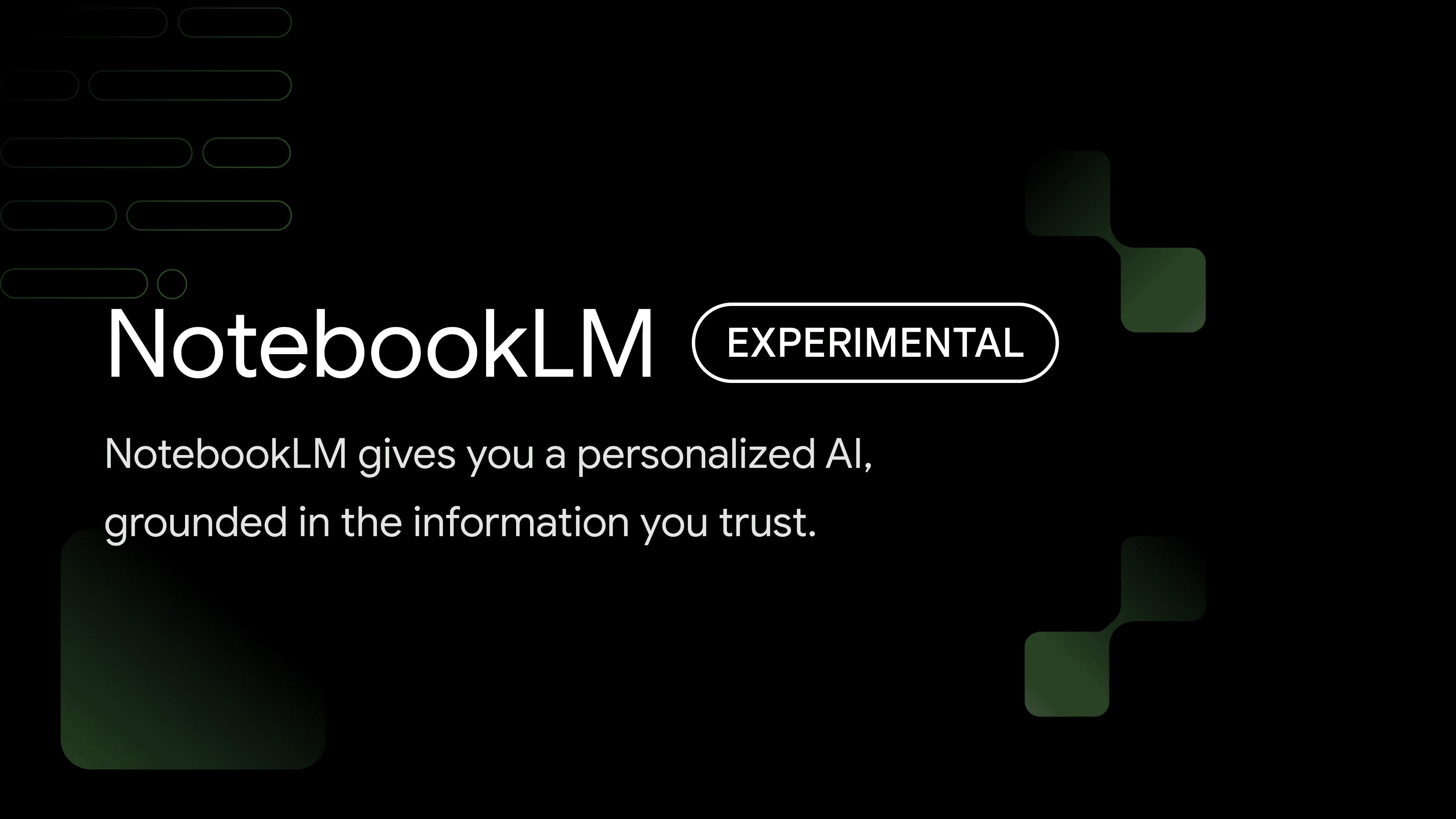Google has introduced a new feature called Notebook LM, which shows off its latest AI summarization technology. This tool, part of Google Labs’ AI toolkit, lets users create summaries from different sources, including audio. It focuses on specific topics and sources, providing a unique and somewhat surprising experience. NotebookLM is changing how we access information. This AI tool can summarize documents, answer questions based on your notes, and help you brainstorm ideas, acting like a personal research assistant.
Notebook LM includes features such as code generation, a chat interface for conversations, text generation in different styles, and translation options. It is useful for anyone from students to writers to researchers, helping them work with information more efficiently. Users can test this new feature, which allows follow-up questions about summarized articles. The AI can give clear summaries of complex topics, like data scraping and opt-out policies. While it shows impressive abilities, it also raises questions about the role of AI in content creation and analysis.
Ways People Are Using Google’s NotebookLM
NotebookLM is an AI-powered tool that helps people summarize documents, answer questions, and brainstorm ideas. It’s like having a research assistant that can quickly make sense of your notes and documents. Let’s look at how people use NotebookLM.
Summarization
Many people use NotebookLM to summarize their documents. The AI can summarize factual topics and source documents. This is helpful for students, writers, and anyone who needs to get a quick overview of a lengthy document.
Answering Questions
NotebookLM can answer your questions about your documents. It can find specific information and provide accurate answers. This is helpful for researchers, students, and anyone who needs to find information quickly.
Brainstorming Ideas
Many people use NotebookLM to brainstorm ideas. The AI can help you generate new ideas and explore different perspectives. This is helpful for writers, entrepreneurs, and anyone who needs to come up with creative solutions.
Additional Features
NotebookLM also offers a variety of other features that can be helpful for users. These features include:
- Code generation: NotebookLM can generate code in popular programming languages, which can be helpful for developers and programmers.
- Chat: NotebookLM has a chat feature that allows users to ask questions and receive assistance from the AI in a conversational manner.
- Text generation: NotebookLM can generate text in a variety of styles, which can be helpful for writers and content creators.
- Translation: NotebookLM can translate text between multiple languages, which can be helpful for users who need to communicate with people who speak different languages.
| Feature | Description |
|---|---|
| Summarization | Summarizes factual topics and source documents. |
| Answering Questions | Answers questions about uploaded documents. |
| Brainstorming | Generates ideas and explores different perspectives. |
| Code generation | Generates code in popular programming languages. |
| Chat | Allows users to ask questions and receive assistance from the AI in a conversational manner. |
| Text generation | Generates text in a variety of styles. |
| Translation | Translates text between multiple languages. |
Other Ways People Are Using NotebookLM
People are finding creative and innovative ways to use NotebookLM in their daily lives and work. Here are some examples from the Reddit thread you shared:
- Learning new topics: NotebookLM can help you quickly grasp a new subject by summarizing important information and answering your questions.
- Research: NotebookLM can help you analyze and synthesize information from various sources, making research more efficient.
- Writing: NotebookLM can assist in writing different kinds of creative content, like poems, code, scripts, and even musical pieces. It can also help with academic writing, such as articles, blog posts, and presentations.
- Homework help: NotebookLM can be a valuable tool for students, helping them answer questions and providing relevant information for their assignments.
- Content creation: Some users leverage NotebookLM for creating audio overviews for podcasts or videos, streamlining their content production workflow.
These are just a few examples of how people are using NotebookLM. As more people experiment with this AI-powered tool, we can expect even more innovative and creative applications to emerge.
More Ways to Use NotebookLM
NotebookLM is a versatile tool that can be used in various ways. Here are some additional use cases:
- Learning a new topic: NotebookLM can help you quickly get up to speed on a new topic by summarizing key information and answering your questions.
- Writing different kinds of creative content: NotebookLM can help you write different kinds of creative content, such as poems, code, scripts, musical pieces, email, letters, etc. It can also help you write different kinds of academic content, such as articles, blog posts, and presentations.
- Getting help with your homework: NotebookLM can help you with your homework by answering your questions and providing you with relevant information.
Overall, NotebookLM is a powerful tool that can be used in various ways. It is still under development, but it has the potential to be a valuable tool for anyone who needs to work with information.
Key Takeaways
- Google’s Notebook LM offers AI-powered summarization with topic-focused features
- The tool can provide concise summaries and answer follow-up questions about articles
- AI summarization raises important questions about data use and content creation
Common Questions About AI Summarization and Data Scraping
How Does AI Summary Creation Impact Content Producers?
AI summarization tools pose challenges for content creators. These systems can quickly distill long articles into brief summaries, potentially reducing traffic to original sources. Content producers may need to adapt their strategies to maintain readership and revenue. Some options include:
- Focusing on unique analysis and perspectives AI can’t replicate
- Creating content optimized for AI summarization
- Exploring new monetization models beyond page views
What Privacy and Security Risks Come with AI Data Collection?
AI systems that scrape online content raise several privacy and security concerns:
- Collecting personal data without consent
- Aggregating information to build detailed user profiles
- Potential for data breaches exposing sensitive information
- Use of private data for targeted advertising or manipulation
Organizations using AI scraping should implement strong data protection measures and be transparent about their practices.
Are There Safeguards Against AI Summary Bias?
Efforts to prevent bias in AI summaries include:
- Using diverse training data sets
- Implementing algorithmic fairness techniques
- Human oversight and auditing of AI outputs
- Allowing user feedback to flag biased summaries
Despite these measures, eliminating all bias remains challenging. Users should critically evaluate AI-generated summaries.
What Steps Promote Responsible AI Summary Tool Usage?
To encourage ethical use of AI summarization:
- Develop clear usage guidelines and policies
- Provide transparency about AI involvement in content creation
- Obtain proper permissions for data used to train AI models
- Allow content creators to opt-out of having their work summarized
- Include links to original sources in AI-generated summaries
How Does AI Summary Affect Information Spread?
AI summarization changes how information flows:
- Faster dissemination of key points from long articles
- Potential for misinformation if summaries are inaccurate
- Reduced exposure to nuanced arguments and context
- Changes in how people consume and share news
This shift may require media literacy education to help people critically evaluate AI-generated summaries.
What Ethical Issues Arise from AI News Aggregation?
AI news aggregation and summarization raise several ethical questions:
| Ethical Concern | Description |
|---|---|
| Copyright | Does AI summarization infringe on content creators’ rights? |
| Attribution | How to properly credit original sources in AI summaries? |
| Accuracy | Ensuring AI doesn’t misrepresent or oversimplify complex topics |
| Transparency | Disclosing when content is AI-generated or summarized |
| Fairness | Preventing bias in story selection and summary creation |







